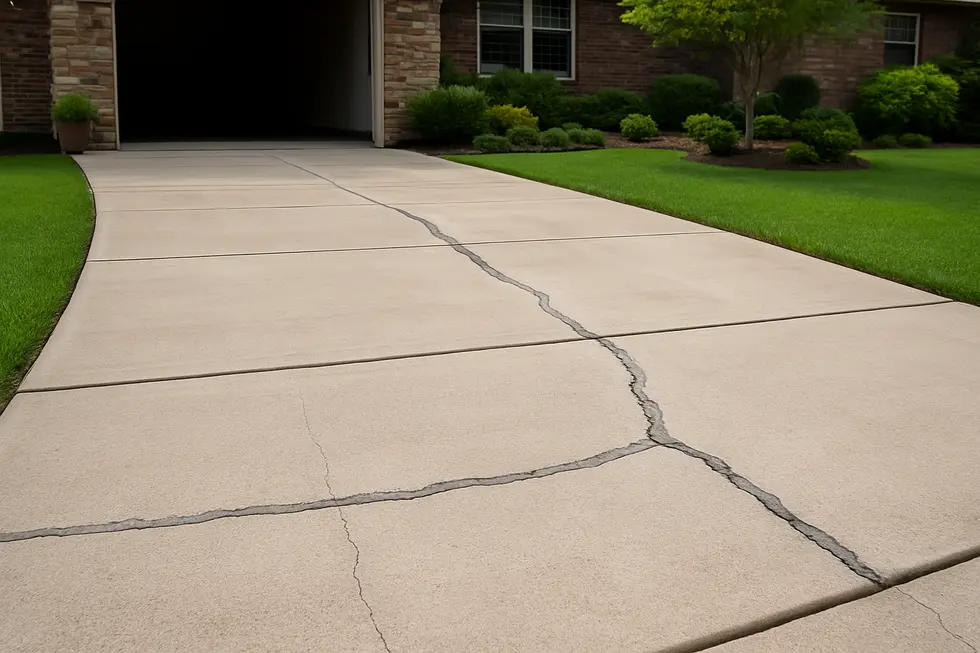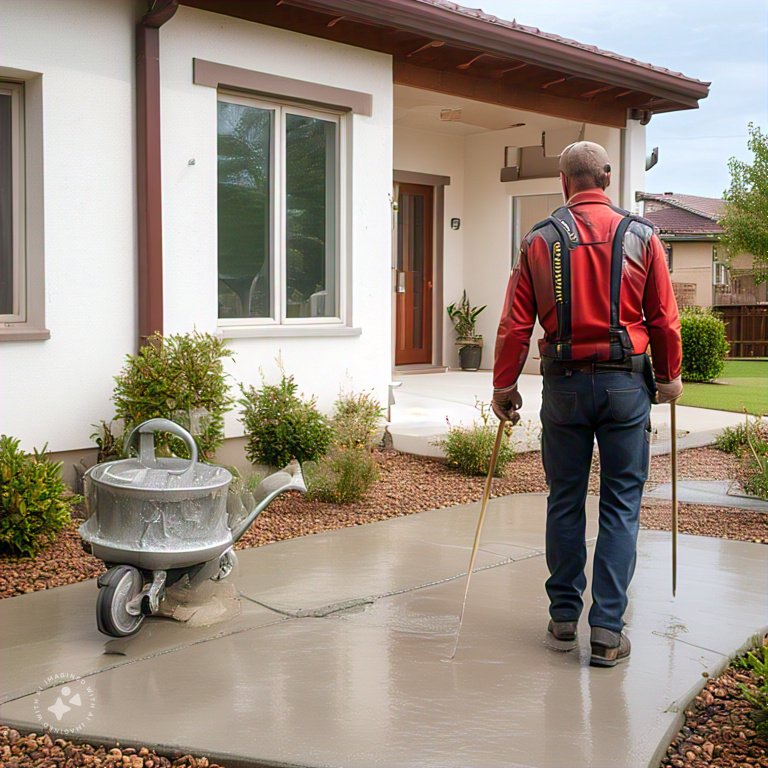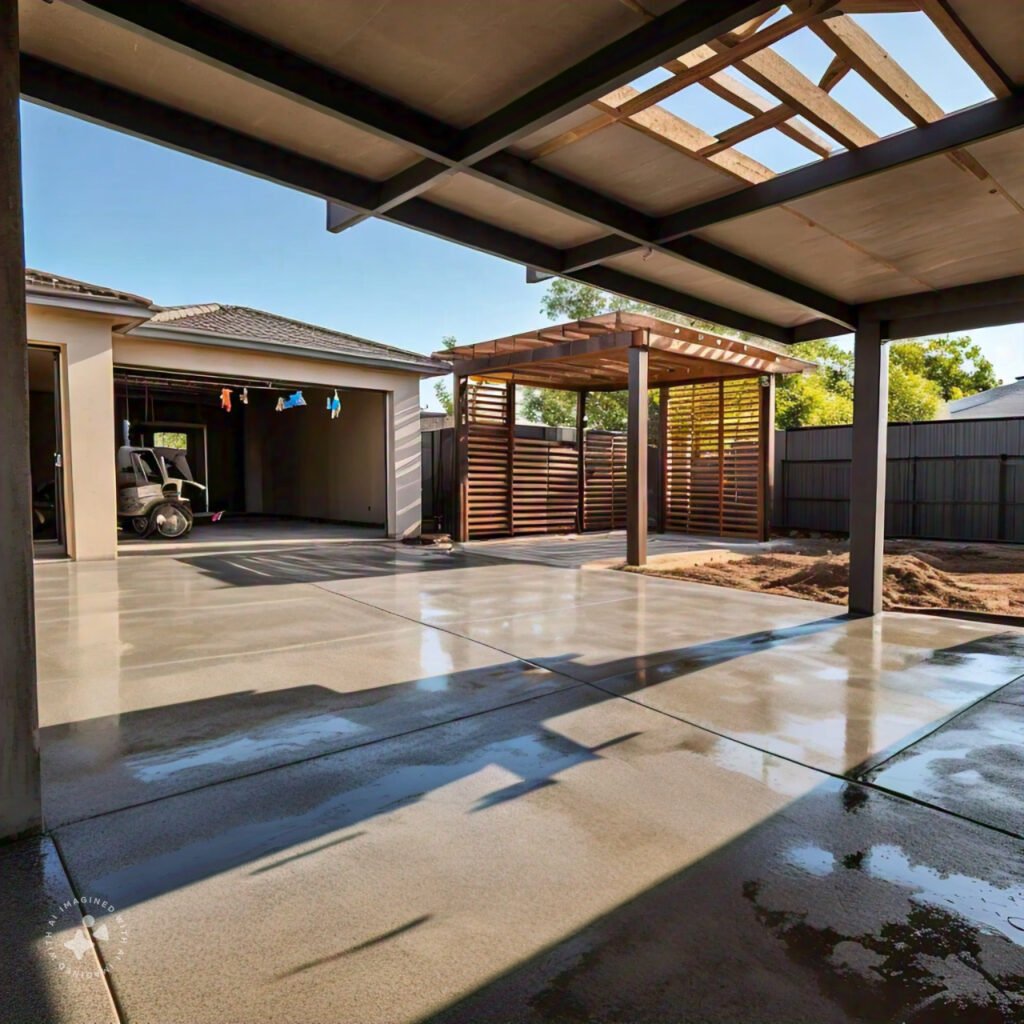Concrete driveways add curb appeal and functionality to your home, but they are prone to developing cracks over time due to ground movement, weather, and age. Early detection of these cracks is essential for preventing structural issues and costly repairs. Recognizing warning signs allows homeowners to take prompt action, preserving both the appearance and integrity of their concrete driveways. This article highlights five critical signs of concrete cracks and provides effective strategies to address them before they escalate, ensuring your driveway remains durable and attractive for years to come.
Unstable Foundation Movement and Large Horizontal Cracks
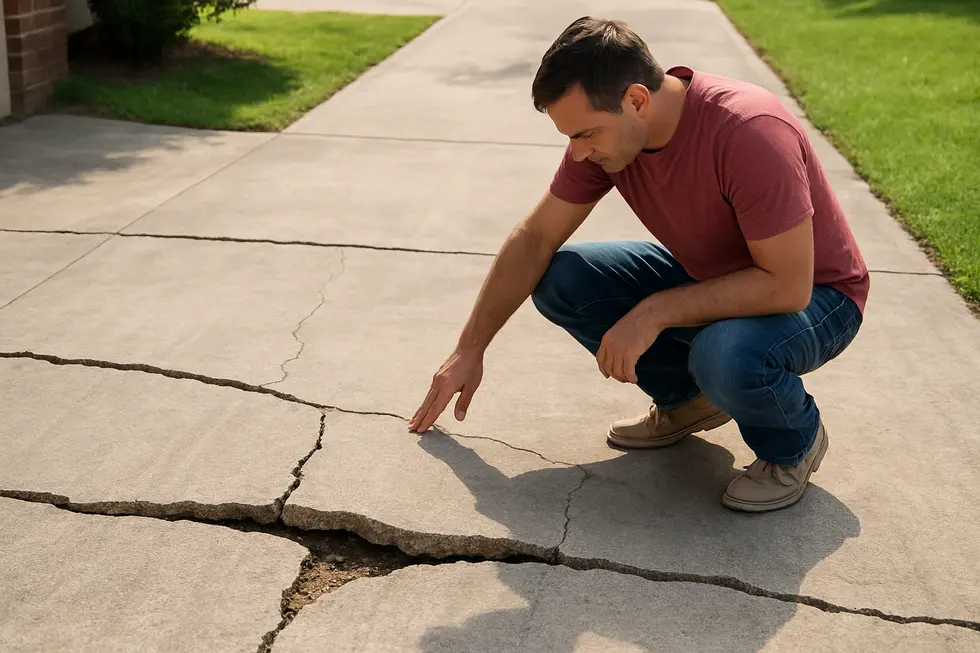
Large horizontal cracks spreading across a driveway are often a stark indicator of a serious underlying issue—foundation movement. When a home’s foundation shifts, it exerts uneven pressure on the concrete, causing it to crack horizontally in prominent, unsightly lines. These cracks are not superficial; they reveal that the soil beneath the driveway may be unstable or shifting, often due to poor drainage, soil erosion, or inadequate underpinning. A well-lit scene shows a homeowner standing beside the driveway, inspecting the extensive cracks with concern evident on their face. Visible soil beneath the cracks appears disturbed, indicating movement underneath. This type of crack is a red flag because it suggests the foundation is no longer stable and that the driveway may soon suffer larger, more costly damages if left unaddressed. Addressing this problem early is crucial. Foundation settlement or movement can lead to uneven surfaces, tripping hazards, and structural issues that affect the safety and integrity of your property. Consulting a professional foundation specialist is strongly recommended when these large, horizontal cracks are observed. They can assess whether the soil needs stabilization or if underpinning services are necessary. Additionally, proper drainage around your home can prevent water from seeping into the soil and compromising its stability. Regularly inspecting your driveway for signs of movement or cracking—especially after heavy rain or drought—is part of proactive maintenance. Recognizing these warning signs early can save you from significant repair expenses later. Prevention involves ensuring proper grading, fixing drainage issues, and reinforcing the soil beneath your driveway when necessary. For residents in areas prone to soil shifting, such as regions with expansive clay, taking these preventative steps becomes even more crucial. Staying vigilant and responding promptly when you notice large horizontal cracks can safeguard your property and extend the lifespan of your driveway. For more detailed insights into driveway installation and preventive maintenance, consider exploring this resource to learn how expert planning can help avoid foundation-related problems before they arise.
Multiple Fine Hairline Cracks Indicating Shrinkage

When inspecting your driveway surface closely, you may notice numerous fine, hairline cracks spread evenly across the concrete. These tiny fissures are often a natural part of the curing process and can indicate shrinkage as the concrete dries and loses moisture. Although seemingly minor, the pattern and extent of these cracks can provide valuable insights into the health of your driveway. Shrinkage cracks typically appear as a network of fine lines that crisscross the surface, creating a delicate web-like pattern.
The texture of concrete with shrinkage cracks shows a surface that is still relatively smooth but punctuated by these tiny fractures. They are usually less than 1/16 inch wide and may run parallel or intersect in multiple directions. In natural daylight, these cracks are more visible because light naturally accentuates small surface irregularities, making it easier to identify early signs of potential issues.
Understanding the cause of these cracks is essential for future maintenance. As concrete cures and moisture evaporates, volume reduction occurs, which naturally leads to shrinkage. This is especially common in climates with rapid drying or intense sunlight exposure. While some fine cracks are unavoidable, their presence in large numbers or widespread distribution can signal a potential problem if left unaddressed.
Preventing extensive shrinkage cracks involves proper mix design and curing practices. Using a well-graded mixture with adequate water-cement ratio minimizes excessive shrinkage. Applying curing methods that retain moisture, such as covering the surface with wet burlap or plastic sheeting, helps reduce rapid drying. Additionally, incorporating control joints at strategic intervals allows the concrete to crack in controlled locations, minimizing random cracking across the entire surface.
If you notice an abundance of tiny cracks across your driveway, it’s advisable to consult with a concrete professional. They can evaluate whether these cracks are primarily cosmetic or indicative of deeper issues like improper curing, settling, or subsidence. Addressing minor shrinkage cracks early can prevent them from widening into more severe, costly damage. For ongoing protection, regular maintenance—such as sealing small cracks and checking for signs of further movement—can extend the lifespan of your driveway.
In some cases, extensive shrinkage cracks may compromise the structural integrity or aesthetic appeal of your driveway. When this occurs, professional interventions like epoxy injections or crack filling can restore surface integrity and prevent water infiltration. Such repairs are vital because water can seep through these tiny openings, eroding the sub-base and leading to more significant issues over time.
Understanding and monitoring early signs like fine hairline cracks can save homeowners from costly repairs down the line. By maintaining proper moisture levels during curing and applying preventive control measures, you significantly reduce the risk of shrinkage-related damage. Regular visual inspections, especially after periods of heavy sun exposure or drought, help catch issues early. Overall, paying close attention to these delicate surface patterns ensures your driveway remains durable, functional, and visually appealing for years to come. For more information on concrete driveway maintenance and professional repair options, consider visiting your local concrete service provider.
Discoloration and Efflorescence as Signs of Water Infiltration
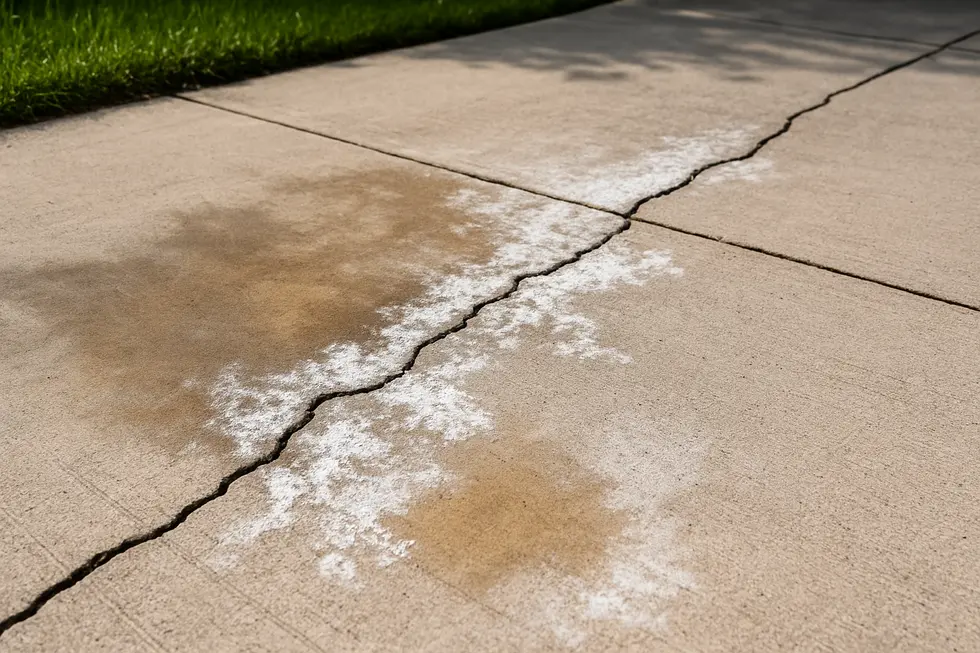
When inspecting your concrete driveway on a bright, sunlit day, subtle yet telling signs of water infiltration can become evident. Discoloration often manifests as uneven patches that contrast with the surrounding clean, gray surface. These discolored areas may appear darker or lighter, signaling that moisture has penetrated beneath the surface, affecting the concrete’s appearance.
One of the more conspicuous indicators of ongoing water ingress is the presence of white, powdery efflorescence deposits near cracks or along joints. Efflorescence occurs when water seeps through the concrete, dissolving soluble salts within the material. As the water evaporates on the surface, it leaves behind these salt deposits, creating a white or chalky appearance. In the bright daylight, these deposits catch the eye, standing out against the otherwise pristine surface.
Although the surface of your driveway may appear clean at first glance, these deposits reveal a deeper moisture issue. The subtle moisture beneath the surface can weaken the concrete over time, especially if water continues to infiltrate through existing cracks or vulnerabilities. The presence of efflorescence near cracks suggests that water is entering through these weak points, accumulating salt deposits as it evaporates.
The contrast made more apparent by sunlight accentuates the importance of early detection. If left unchecked, water infiltration can lead to more extensive damage, including increased cracking, spalling, or even structural deterioration of your driveway. To prevent such costly repairs, it’s essential to take timely measures. Addressing the underlying water issues may involve sealing cracks, improving drainage around your driveway, or applying protective sealants designed to block water ingress.
Understanding these signs allows homeowners to catch problems early, safeguarding their investment. Regular visual inspections, especially after heavy rains or freeze-thaw cycles, should include checking for discoloration and efflorescence. When these signs are detected, consulting with a concrete professional can help determine the best course of action to prevent further moisture-related damage.
For more comprehensive solutions on maintaining the integrity of your concrete surfaces, consider exploring this resource. Proper maintenance and early intervention are your best defenses against water-induced deterioration, saving you money and preserving the appearance and functionality of your driveway for years to come.
Cracks Near Expansion Joints or Edges
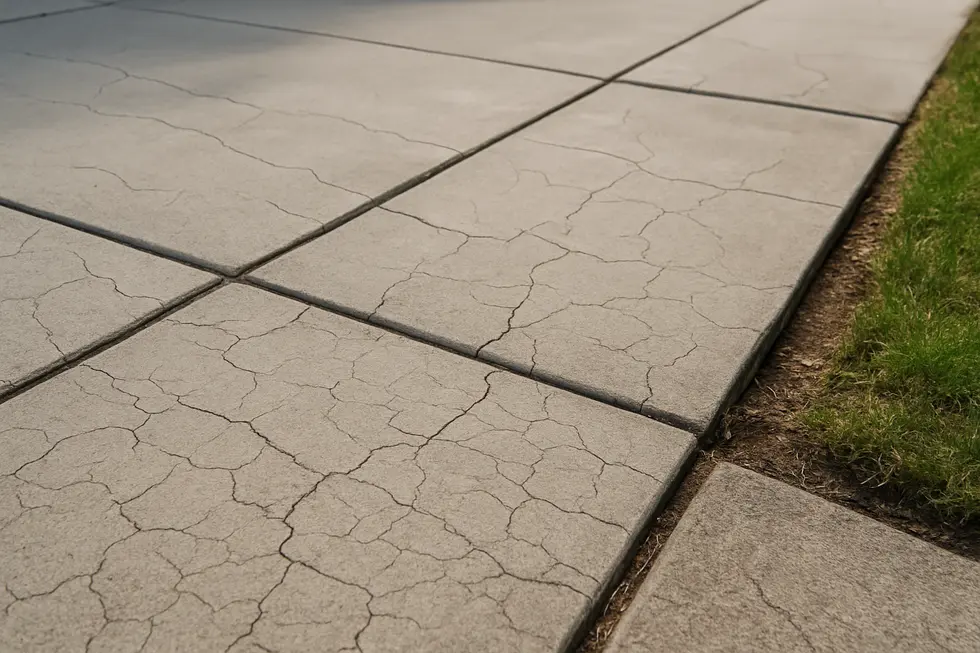
Cracks that form close to the expansion joints or along the edges of your driveway are common but often overlooked warning signs of underlying issues. These areas naturally experience more stress due to their position and movement, making them prime locations for crack development over time. Small cracks near these zones should not be dismissed, as they can gradually widen if left unaddressed, leading to more extensive and costly damage.
The proximity of cracks to expansion joints or edges can tell you a lot about the state of your driveway. While minor, hairline cracks near the joints might simply be a result of normal expansion and contraction caused by temperature fluctuations. However, cracks that begin to separate from the joints or edges, especially if they grow in size, may indicate deeper problems such as improper curing during installation, soil settlement beneath the slab, or excessive movement from ground shifts.
Visual cues are essential in early detection. Looks for small but visible cracks forming near the edges or slightly separated from the expansion joints. Sometimes, these cracks can develop a slight separation from the joint, creating gaps that look like tiny fissures. In some cases, these cracks may be accompanied by minor displacement, with the concrete slightly lifting or sinking around the edges.
Understanding why these cracks appear is crucial to preventing larger issues. Often, they are caused by inadequate control joint placement during installation, or by soil movement beneath the driveway. When the ground beneath shifts or settles unevenly, the concrete slabs are subjected to stress. Those stresses are relieved through cracks that typically start near joints or edges, where the concrete is less resistant. If ignored, they can lead to water infiltration, further soil erosion, and more significant structural damage.
Fortunately, early signs can be managed with proper maintenance. Regular inspections of cracks near the edges and joints can help catch problems early. Sealing small cracks with appropriate concrete repair products can prevent moisture infiltration, which is a common catalyst for freeze-thaw damage and further cracking. Ensuring your driveway’s edges are reinforced or properly supported can also help mitigate movement.
Additionally, addressing soil stability is vital. For driveways with persistent issues, consulting professionals about soil stabilization or drainage improvements can significantly reduce ground movement. Properly grading the driveway to ensure water flows away from the edges minimizes erosion and soil shifting, thus decreasing the likelihood of new cracks forming.
For homeowners, understanding what to look for and how to respond to these early cracks can mean substantial savings. Preventative measures like routine inspections, timely sealing, and addressing ground movement are essential in maintaining the longevity of your driveway. If cracks near expansion joints or edges are detected early, they can often be repaired with minimal effort, preventing more extensive and costly repairs down the line. For more detailed guidance on driveway repair and maintenance, visiting local experts or learning about best practices can prove invaluable. You can find additional insight on how to effectively maintain your concrete driveway at Houston concrete specialists.
Signs of Surface Sloping or Unevenness
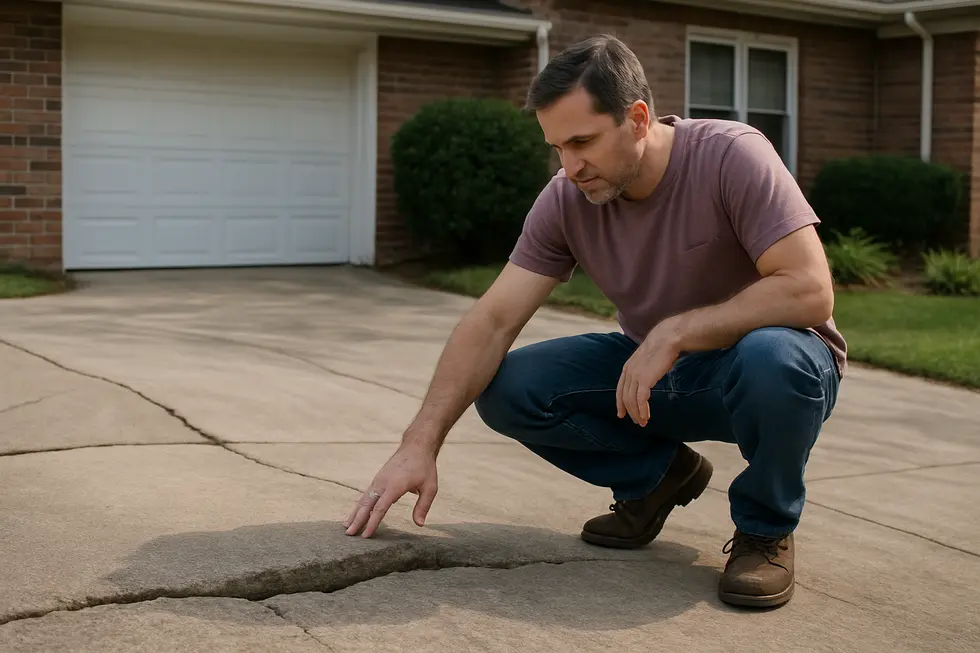
When inspecting your driveway for signs of surface sloping or unevenness, a keen eye can save you significant repair costs down the line. In a typical scene, you might notice a homeowner walking along the driveway during daylight, holding a level or a straightedge to assess the surface’s flatness. The photograph shows sections of the driveway where the surface appears noticeably sloped or uneven, often causing water to pool rather than drain properly.
Uneven surfaces are often caused by soil movement beneath the concrete, poor installation practices, or long-term exposure to environmental stresses. These irregularities can lead to water pooling in certain areas, which exacerbates deterioration over time. Water accumulation not only contributes to surface wear but can also penetrate cracks and undermine the concrete’s structural integrity.
To identify these issues, look for mid-slope dips, humps, or areas where water tends to settle after rain. During your inspection, use a long straightedge or a level across different sections of the driveway, paying close attention to any gaps or gaps that tilt. Even subtle slopes can gradually develop into larger problems if ignored.
Addressing surface sloping early can prevent more extensive damage. Proper grading during initial installation ensures water flows away from your property, reducing beyond surface concerns. Regular maintenance, such as sealing and minor adjustments, can help keep the surface level and prevent water pooling.
For those noticing unevenness, consulting a concrete specialist can determine the best approach—whether it involves grinding down high spots, adding a layer of overlay, or regrading the driveway entirely. Because water pooling can lead to cracks and structural damage, timely intervention is crucial.
If you’re unsure about the extent of unevenness or how to measure it accurately, consider visiting this resource, which offers guidance on driveway maintenance and repair strategies. Vigilant surveillance of your driveway’s surface can help catch issues early, ensuring your investment remains durable and visually appealing for years to come.
Timely identification of cracks in your Concrete Driveways is vital to preventing further structural deterioration and keeping your property’s aesthetic appeal. Regular inspections, especially after extreme weather or soil movement, can save homeowners significant repair costs. Addressing early warning signs with professional corrective measures preserves driveway durability and adds long-term value to your home. Don’t wait until cracks become unmanageable—proactive maintenance is the key to a resilient and attractive driveway that endures for decades.
Secure your driveway’s integrity today by consulting trusted concrete experts in Houston.
Learn more: https://ccsconcretedriveways.com/#quote
About us
At Cross Construction Services, we specialize in creating durable, aesthetically pleasing driveways that not only enhance the curb appeal of your home but also add significant value to your property. With over three decades of experience in the construction industry, our team in Houston, Texas, is committed to delivering top-quality craftsmanship and unparalleled customer service.
